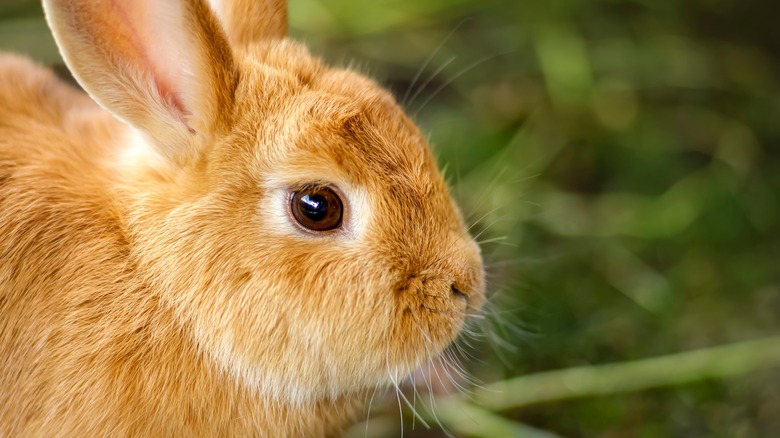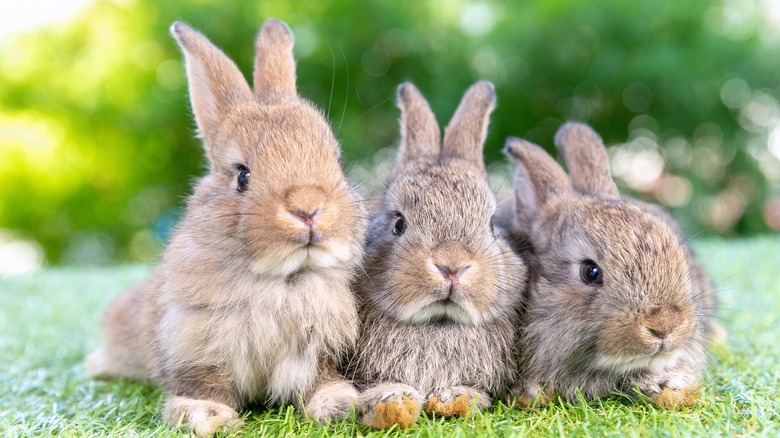Why Rabbits Are Physically Unable To Vomit
According to the BCSPCA (via PetKeen in January 2023), there are only two creatures more popular than rabbits as pets in the United States. There are no prizes for guessing which animals assume the top two spots.
In the United Kingdom, the RSPCA states that there are around 900,000 pet rabbits, with PetKeen stating that there are a little over three times that many in the United States. Compared to our beloved pet dogs and cats, then, they're distinctly B-list celebrities in terms of numbers. As any rabbit owner will tell you, though, they're just as adorable and worthy as companions (even if they won't play fetch like a dog or act aloof and superior like a cat).
Our canine and feline friends each have their own interesting biological traits, but so do rabbits. One curious detail about the latter is that they're physically unable to vomit. Here's why.
Rabbits don't have a gag reflex
Now, nobody would say that vomiting is a particularly enjoyable experience. If you've eaten something especially spicy, colorful, stodgy, or otherwise particularly unpleasant to see/smell again, it can be downright harrowing. The gross act does, however, have important implications for our health. As Healthline reports, it can be caused by anything from migraines to motion sickness, and it's also the quickest, safest, and most practical way to remove something from our stomachs that shouldn't be there.
In short, after a suitable period of recovery and replenishment of any lost nutrients and fluids, we should actually be rather glad that we can vomit in a lot of cases. Per Purina, the same is often true of dogs, which tend to expel anything they may have consumed that could be dangerous to them. At the same time, though, in humans and in pets alike, vomiting can be a sign of something far worse, and medical attention must be sought if repeatedly vomiting.
Rabbits, meanwhile, are entirely unable to vomit. Writing in Rabbit Mag, Dr. Elly Cameron explains that this is the case because bunnies "do not have a gag reflex like we do. They also lack a true stomach and the ability to retch or choke down something that is causing them to be ill."
Keeping rabbits safe
Dr. Jamie Whittenburg explained to Rabbit Pros that the esophagus of a rabbit contains a very powerful muscle, and this prevents the animal's food from taking anything other than a one-way trip through its body. Rabbits are little-and-often eaters and energetic ones, so this biological arrangement is just right for them. "The esophagus enters the stomach at an angle that acts to prevent backflow, and the entrance to the stomach is surrounded by a thick fold of tissue acting as a one-way barrier," Whittenburg adds. "All these anatomical structures work together to prevent rabbits from vomiting."
They are, in short, lean, mean grazing machines. These adaptations come at a cost, however — when things go wrong, rabbits' lack of a digestive eject button can be fatal to them. Home & Roost states that hairballs, choking, and other issues are far more pronounced in rabbits and that the signs must be understood and acted on quickly. Labored breathing, panicked head movements, and mucus production are among the signs that a rabbit may be choking. Fortunately, there are methods to perform the Heimlich maneuver on rabbits, as demonstrated by Special Bunny (via Tamara Adlin on YouTube).


